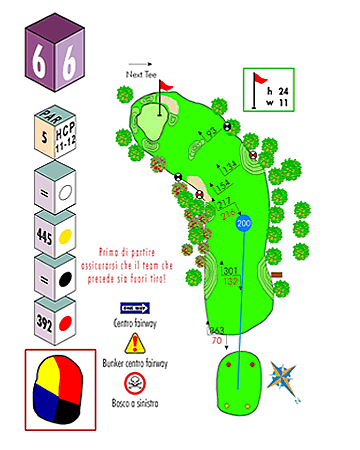
Hole 6 - The cork oak
The bunker in the middle of the fairway at the landing of the 2nd shot is one of the major hazards of this par 5 that should not be underestimated despite the width of its fairway.
Some 'camel humps' surround the green and can save from possible misjudgments.


The cork oak (Quercus suber)
Originally from southwestern Europe and northwestern Africa, it has long been naturalized and spontaneous throughout the western Mediterranean basin.
The cork oak is a thermophilic species (it dies at a temperature of -5 °C) that prefers warm and moderately dry environments. Unlike pure holm oak woods, cork oak woods are open forests that allow the growth of herbaceous and shrub vegetation usable for grazing, thus compatible with extensive livestock farming. The holm oak has historically been used for the production of construction timber, firewood, and charcoal. The cork oak better resists fires thanks to the protective action that cork exerts on the underlying tissues.
For these reasons, the selective action of humans and fires tends to favor cork oak cover over holm oak cover over time.

